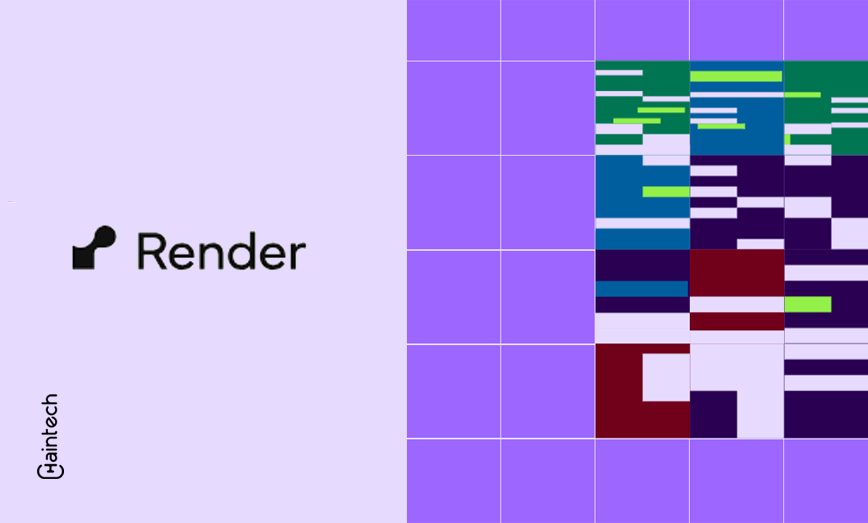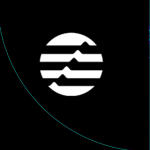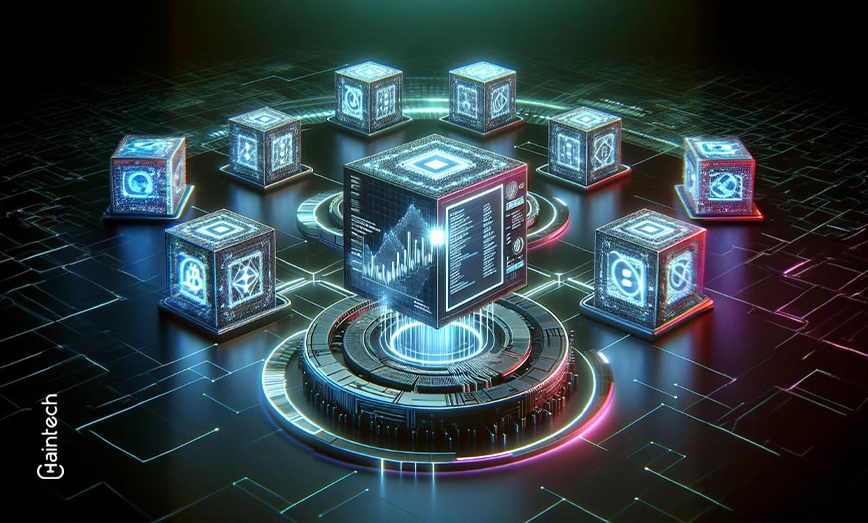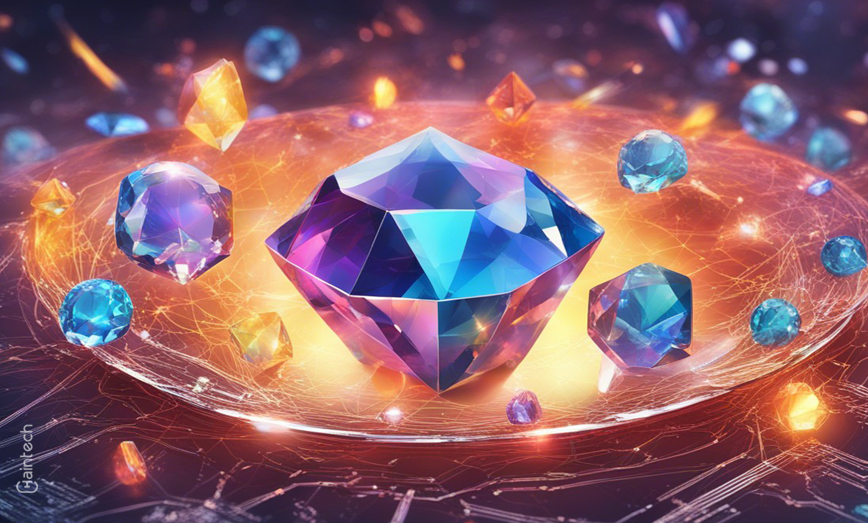How does Render work?

Imagine a world where everyone can get high-quality, low-cost 3D modelling, no matter where they are or what tools they have. With RNDR’s help, it’s now possible!
The Render Network (RNDR) is a decentralised network that uses blockchain technology to make GPU rendering tools available to everyone. By making high-quality rendering, the RNDR token is changing fields like architecture, games, film, and virtual reality.
Let’s learn more about it in this blog.
What is Render?
Render (RNDR) is a cryptocurrency that is linked to the Render Network. The Render Network is a blockchain platform that concentrates on the rendering and processing of 3D within the cryptocurrency metaverse. It is intended to serve as a distributed network for the purpose of rendering and processing duties, thereby meeting the requirements of various industries, including film production, computer graphics, and more.
Basically, if you want to design in the metaverse but don’t have enough GPU space on your home computer, Render lets you borrow a GPU from someone who isn’t using it right now. Those who rent out their GPU capability to third parties receive RNDR coins.
The Render Network enables users to transfer rendering tasks to a distributed network of computers, which is frequently referred to as a rendering farm. This is especially advantageous for projects that necessitate a substantial amount of computational power and rendering capabilities, such as 3D modelling, animation, and visual effects.
History of Render
The Render Network, founded by OTOY CEO Jules Urbach in 2017, aims to make high-quality graphics rendering accessible to everyone through distributed computing. It uses the RNDR token on the Ethereum blockchain to securely and transparently connect content creators with GPU providers for rendering services.
Traditional rendering methods are expensive, which restricts high-quality rendering options for many producers. Render Network’s decentralised strategy uses idle GPU resources from around the world to make rendering more economical and accessible.
Render Network encountered scalability and uptake issues common to nascent technologies, despite its intriguing concept. The network evolves through technological breakthroughs and strategic alliances to solve these challenges. These activities attempt to improve the ecosystem and meet digital content development business needs.
Designers upload designs, data, and requirements to the Render Network. Rendering these designs produces high-resolution images or movies. Dynamic pricing examines the GPU workload for rendering to ensure equitable computational effort compensation.
The network allocates the GPU workload using a complex algorithm after project submission. The GPU renders the design as required. A validation mechanism verifies this output in “Proof of Render,” which mimics blockchain transaction validation using GPU procedures.
From concept to implementation, the Render Network has pursued the goal of making high-quality rendering available to everybody. Its blockchain and distributed computing technology transform digital content creation and provide a solid rendering foundation for the future.
The RNDR token
After learning about Render Network, let’s analyse the RNDR token, which is essential for utility and governance. Render’s ecology and rendering economy depend on RNDR, unlike other blockchain initiatives.
RNDR is an Ethereum-based ERC-20 token used to access the platform’s decentralised rendering service. GPU owners offer multiple tiers of this service according to quality and speed. Only Tier 2 and 3, ‘Priority’ and ‘Economy,’ are active. Tier 1, involving ‘Trusted Partners,’ is unlaunched. Creators pay in RNDR tokens and wait for completion after choosing a tier and uploading their project.
How does Render work?
The Render Network is composed of three main components: node operators, creators, and OctaneRender. Together, they form a seamless ecosystem for high-quality, decentralised rendering. Here’s how it works in a simple, user-friendly way:
Creators
Creators are individuals or businesses in need of additional GPU power for their rendering tasks. These can be digital artists, architects, game developers, or anyone else requiring high-quality, fast, and cost-effective rendering solutions. Creators submit their rendering work to the network, complete with the necessary data and specifications.
Node Operators
Node operators are developers or anyone with spare GPU capacity. They register their GPUs on the Render Network to provide rendering power. By doing so, they earn Render tokens (RNDR) as compensation for processing the creators’ rendering tasks. Node operators can choose jobs from a marketplace, selecting tasks that match their GPU’s capabilities and their personal preferences.
OctaneRender
OctaneRender is the rendering software used by GPU providers to deliver top-notch rendering services. It ensures high-quality, noise-free image rendering, GPU acceleration, and physically accurate rendering. This software is a crucial part of the network, enabling providers to offer superior rendering solutions.
The Rendering Process
- Job Submission: Content creators submit their rendering jobs to the network, including all necessary data and specifications.
- Task Distribution: The Render Network then splits the workload among active GPU providers. This distribution is based on factors such as provider reputation, GPU type, capacity, and geographic location to ensure that the tasks are assigned to the most suitable GPUs.
- Rendering: The selected GPU providers process the assigned jobs using OctaneRender, generating the required high-quality images or videos.
- Verification: The generated results are verified for accuracy and completeness through a trustless validation system. This step ensures that the output meets the creators’ specifications and quality standards.
- Payment: Once the output passes verification, creators pay the GPU providers using Render tokens (RNDR). The amount paid reflects the complexity of the job, the resources used, and the urgency of the task.
Why should you use the Render Network?
Cost Accessibility
The Render Network offers cheaper rendering than visual effects businesses. Users can rent spare space and compute capacity from across the world instead of buying expensive rendering equipment. Due to resource availability, this decentralised method provides a competitive price.
Speed
With its distributed GPU network, Render Network offers some of the quickest rendering services worldwide. This means you can generate high-quality images and videos faster than usual.
Space Saving
Due to UHD 16K stereo filming, storage space is becoming scarce. Render Network uses Ethereum to immutably store all data, addressing the space shortage. This secures your HD information without the headache of maintaining storage space.
Security
Render Network secures digital rights management with a decentralised blockchain. Artists may keep their digital work secure and effortless.
Efficiency
GPU efficiency is maximised using the Render Network. Render uses GPUs for more than PoW mining, which underutilised their power. This boosts efficiency and resource utilisation.
Income
GPU owners can earn RNDR tokens for rendering on the Render Network. This is appealing to GPU users since it generates passive income from cryptocurrency.
Scalability and Compatibility
Scalability and accessibility concerns plague traditional rendering techniques. In contrast, Render Network offers rendering services, cryptographic job management, and a developing GPU owner network. Render Network works with gaming, media, and AR due to its scalability.
What is the Future of Render Network and the RNDR Token?
As the digital content creation industry grows and demands increasingly realistic animations, special effects, and VR material, efficient and cost-effective rendering solutions are essential. Render Network can address these expectations with a scalable, decentralised solution for content creators and GPU owners.
As blockchain technology evolves and cryptocurrency acceptance grows, the RNDR token’s utility and value may increase. This could enable AI, scientific computing, machine learning, and other computational-intensive applications of the Render Network beyond digital content creation.
Conclusion
GPU computing power rises with AI and next-generation media demand. Render Network’s enormous network of idle GPUs allows the project to scale GPU power to a creator’s demands. It’s pricing mechanism is based on $1 of RNDR, decreasing the token’s volatility and allowing it to offer competitive prices without limiting GPU availability.
Render Network combines blockchain and smart contracts to build a transparent decentralised GPU power marketplace where node operators can monetise idle GPUs and creators may employ a cost-effective and efficient rendering solution.
This material is for information and education only, not financial or investment advice. Before investing in a protocol, readers should research it. To read about more such topics, visit our blog section.









